If you’re visiting the San Mateo area or just passing through, an interesting activity is Choco Tour Costa Rica. This is a chocolate tour that teaches about the origins of chocolate and how it is grown. Unlike other chocolate tours in Costa Rica, though, this one has a culinary focus as the owner is a chef. In this post, we’ll tell you more about the experience at Choco Tour Costa Rica.
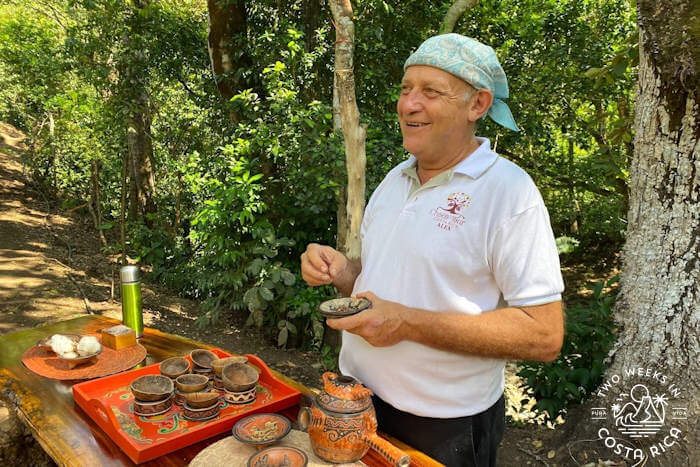
Background
Choco Tour Costa Rica is located in the small town of San Mateo, not far from Orotina. This area is about one hour from San Jose on the way to both Guanacaste in northern Costa Rica and the central and southern Pacific coast.
For this reason, it’s a good stop if you have a couple of extra hours on your way to or from the San Jose International Airport.
The Tour
Meeting Alex
We arrived at the property and pulled in next to the small wooden building.
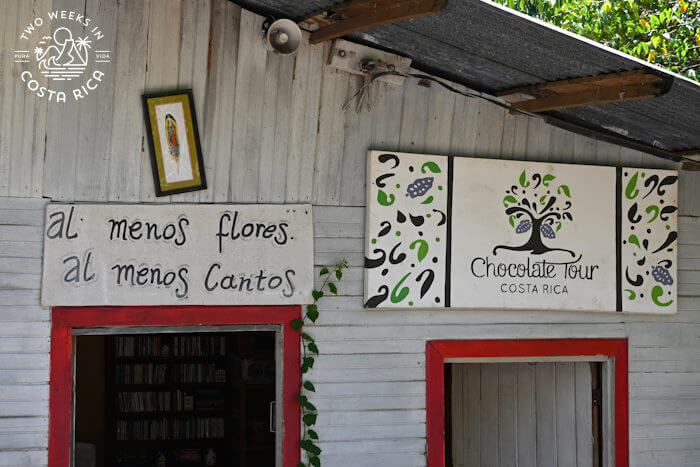
Alex, the owner, greeted us and brought us to some tables out back where we waited for a couple of other people to arrive. Our two young boys did some exploring, checking out the river next to the property and patting the owner’s friendly dogs.
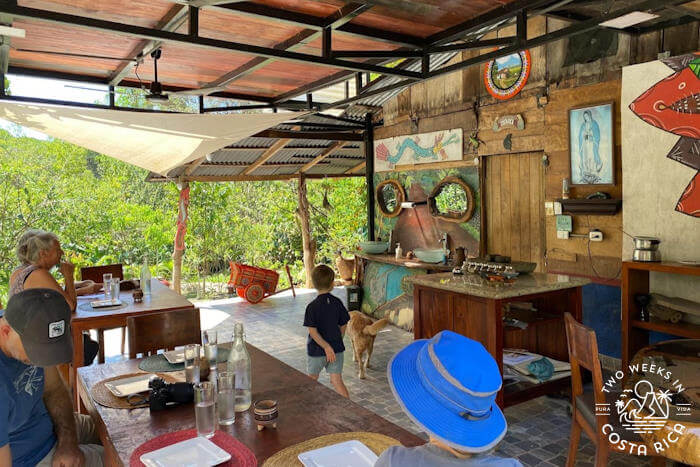
Once the other group arrived, Alex began the tour.
We learned that he was originally from Mexico and had spent much of his life as a chef in Argentina. He now lives in Costa Rica and focuses on his chocolate tour and reforestation project.
The land near Alex’s property was previously used for cattle ranching. Using endangered trees and fruit trees, he has started the process of reforestation in an effort to draw wildlife. He also has young cacao trees and plans to have a botanical garden.
Origins of Chocolate
Right from the start, we could tell that Alex was passionate about food. He believes that food unities us all.
Two of the most important foods in the world throughout history, he explained, were corn and cacao. Surprisingly, he told us that there are 250 types of corn.
Corn, paired with cacao, has been used in drinks for thousands of years. Cacao was believed to be medicine. Alex explained that you can still see this today in some regions of the world. Notably, Blue Zones, like Costa Rica’s Nicoya Peninsula, still use cacao for medicinal purposes.
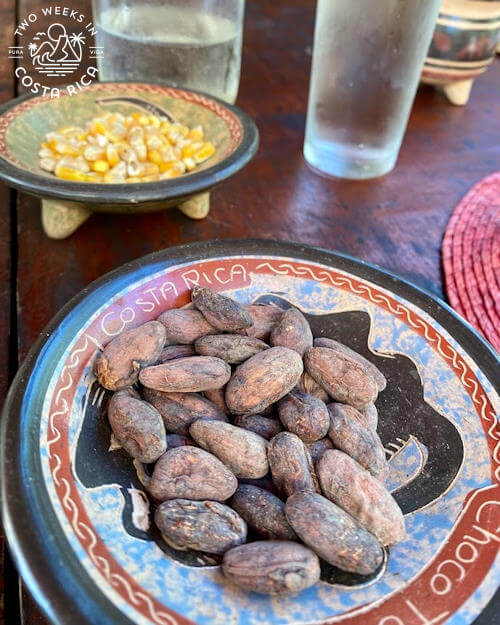
Chocolate Production
After a bit of explanation, Alex brought us near the river to teach us how chocolate is grown.
Cacao trees take about three years to become productive. He showed us some small plants that he had bought from a grower in Cahuita on the Caribbean coast. While Alex has his own cacao trees, they are only two years old (as of January 2024) so not producing cacao yet. This takes about three years.
Alex explained that when the trees reach maturity, they begin to flower. The flowers are pollinated by flies/mosquitoes. Once pollinated, the cacao pods begin to grow.
Breaking open a large oval-shaped fruit, Alex showed us the inside. Rows of sticky white seeds filled the pod. He invited us each to try one, warning not to eat the hard inner seed. The taste of the white covering was sweet and fruity.
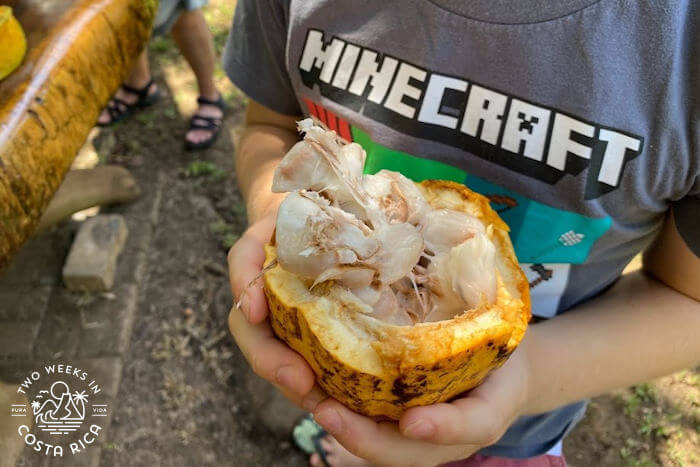
After the seeds are harvested, they are put into a fermentation box for seven days and covered with banana leaves. At end the week, they are brown and dry and start to resemble chocolate. This method of fermentation is based on Mayan tradition.
After fermentation, the brown seeds are roasted until perfection.
Drink Tastings
At a rustic wooden table nearby, Alex invited us to try some of the roasted raw cacao in drinks.
Holding colorful ceramic bowls, he explained about some important spices that we would be trying.
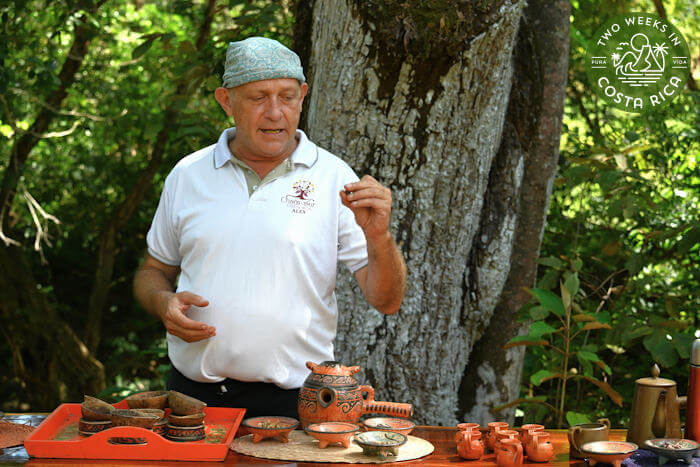
We smelled allspice, vanilla, rosita de cacao (a rare ingredient from jungle of Mexico), and chile morita. Chile morita is a dry, smoked chile pepper often used in Mexican food.
We tried a traditional cacao drink, similar to the sacred Mayan drink. It was made with cacao, water, cinnamon, and a touch of sugar cane.
Another memorable one was the pinio lio. This drink was made from cacao, corn, sugar, and two spices, cinnamon and pimienta gorda. Pimienta gorda, or allspice, takes on many different flavors depending on what it is combined with.
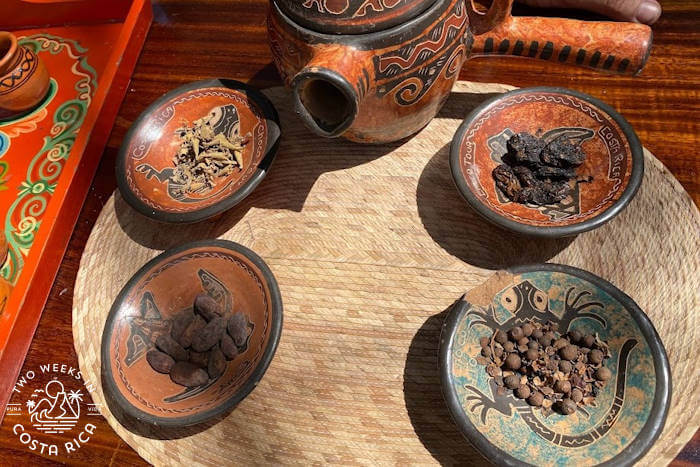
Turning Cacao into Chocolate
After the drink tastings, we headed back to the main building to learn more about turning raw cacao into rich, smooth chocolate.
Alex explained that traditionally, the cacao beans were ground using a metate, made from volcanic stone. We each got the chance to try this old-fashioned grinding method.
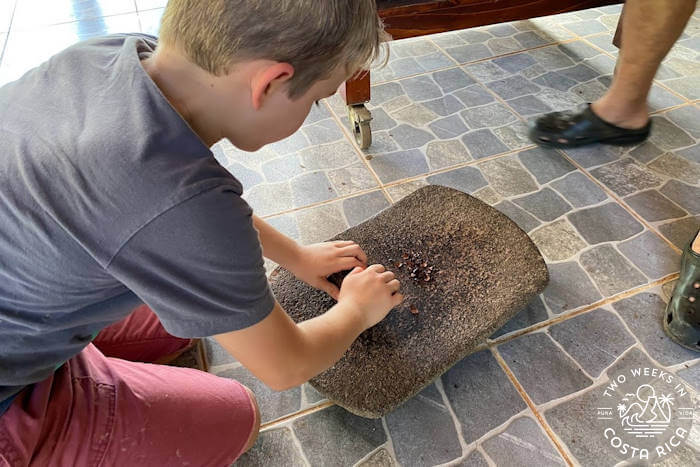
He then went through the history of how the process has evolved over the years. This was really interesting. We learned how the chocolate maker Lindt replaced the metate with a machine that could finely grind the chocolate and then melt it to the consistency we know today.
Tasting the Chocolate
With our new knowledge and appreciation of where chocolate comes from, we finally got to try some.
Alex had us all come up to add some spices or flavorings to chocolate molds. Once we were happy with our creations, he poured melted chocolate that he had prepared on top. The chocolate was 70% dark, 30% sugar so as not to be too strong.
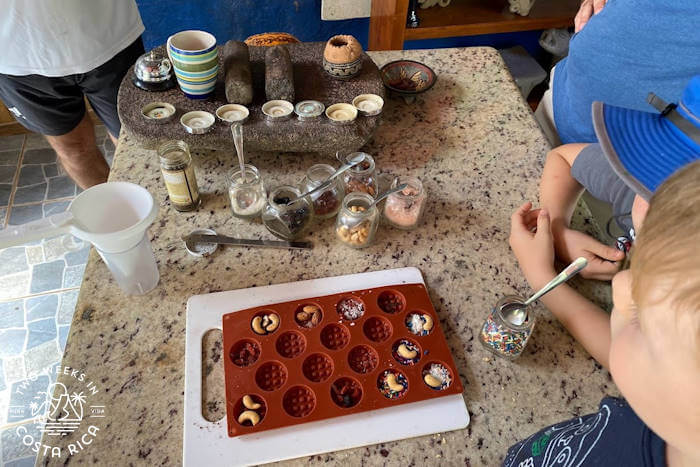
Some popular add-ins were sea salt, cashews, and goji berries. Our kids made sure to add plenty of candy sprinkles. Some brave members of the group even tried the gran mitla, a traditional Mexican spice made from salt, agave worms, and chile.
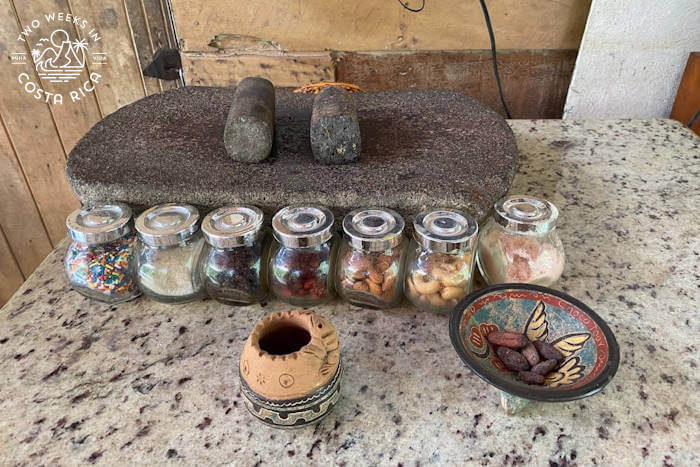
After a few minutes of chilling, Alex presented our finished chocolates.
They were incredibly smooth and delicious. He didn’t add lecithin to them, which is the artificial ingredient that makes chocolate not melt. Because it was so hot, the chocolate disks literally melted in our hands, forcing us to eat them quickly. But this wasn’t a bad thing at all. The chocolate tasting was delicious and the perfect way to end the tour!
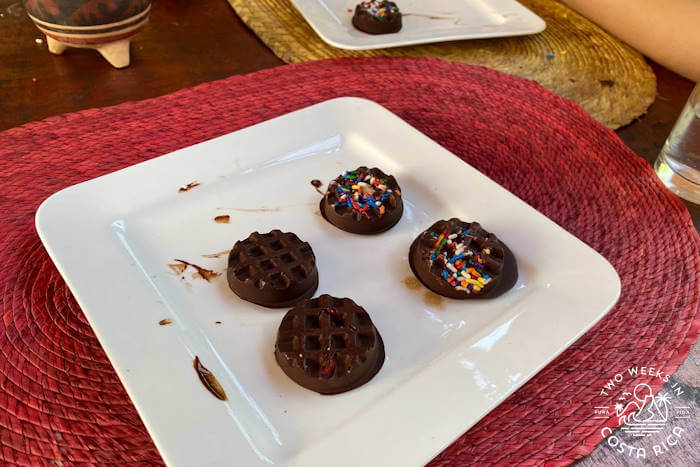
Planning Your Visit to Choco Tour Costa Rica
Cost
Adults – $45 per person
Children ages 3-12 – $10 per person
Tour Times
Tours are offered by reservation at 9:00 a.m., 11:00 a.m., and 4:00 p.m.
Duration
1.5-2 hours
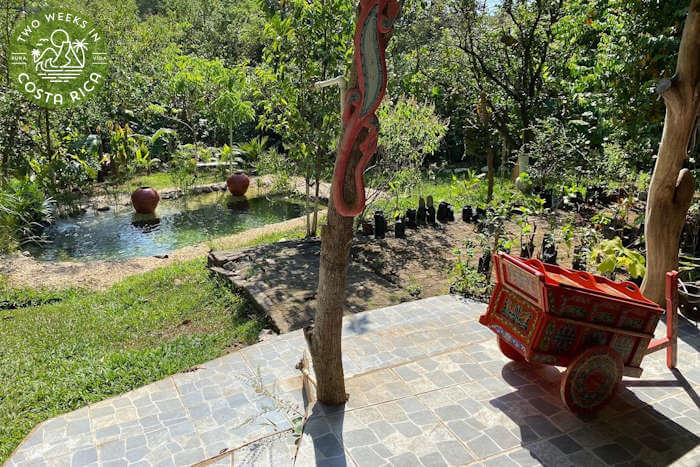
How to Book a Tour
You can book a tour directly through their website.
What to Bring
Part of the tour is in the sun and San Mateo can be very hot. We recommend lightweight clothing, a hat, and sunscreen.
Location/Directions
Choco Tour Costa Rica is located on a side road a few minutes outside downtown San Mateo. Here is a link to the exact location on Google Maps.
It is easy to find. The road is paved and you do not need a four-wheel drive vehicle.
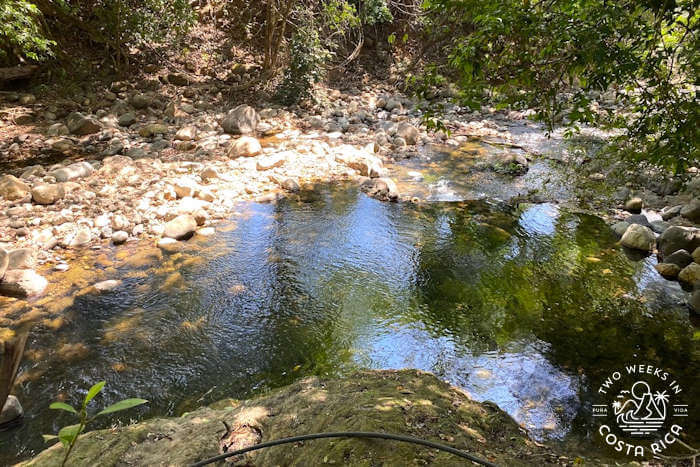
Conclusion
Our family really enjoyed Choco Tour Costa Rica, especially learning about the different spices and flavorings that have been traditionally used in chocolate. This culinary focus was something a little different from other chocolate tours we have done in Costa Rica. We highly recommend it if you’re visiting San Mateo.
Have a question about visiting Choco Tour Costa Rica or have you been? Leave a comment below.
Looking for more information to plan your trip to Costa Rica? Check out these posts:
North Fields Café: If you’re looking for a coffee-chocolate combo tour, this is a great one in La Fortuna/Arenal.
El Arca Botanical Garden and Restaurant: This is an awesome foodie tour near Heredia/San Jose. They have a gorgeous botanical garden and farm-to-table restaurant.
Costa Rica Rental Car Discount: It’s easiest to have a rental car for exploring off-the-beaten path places like San Mateo. Check out our discount to save 10% and get free extras.
